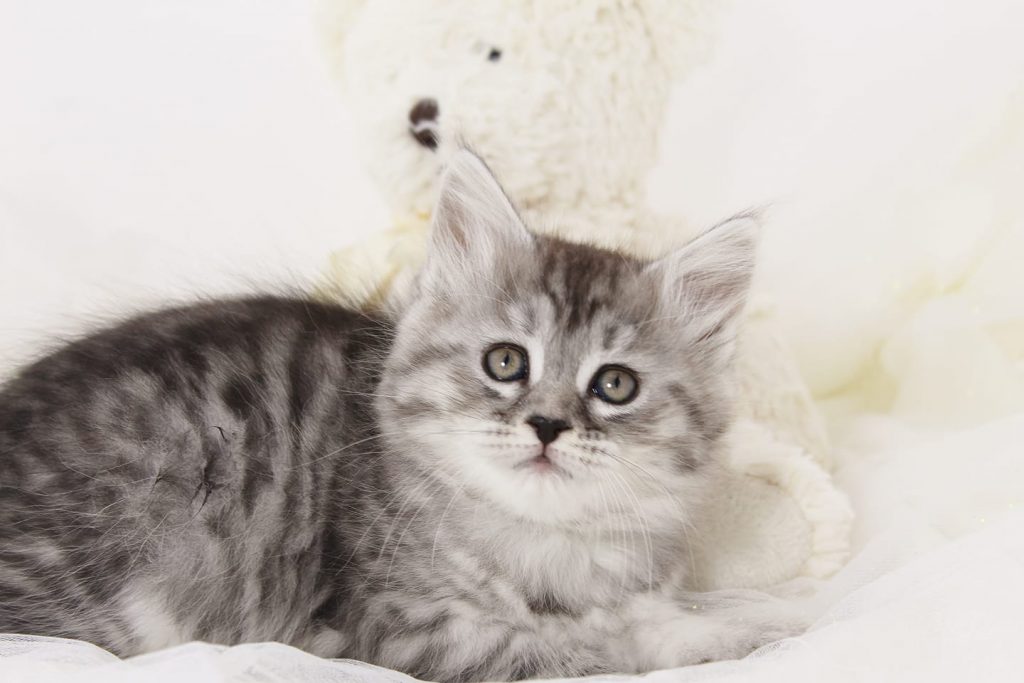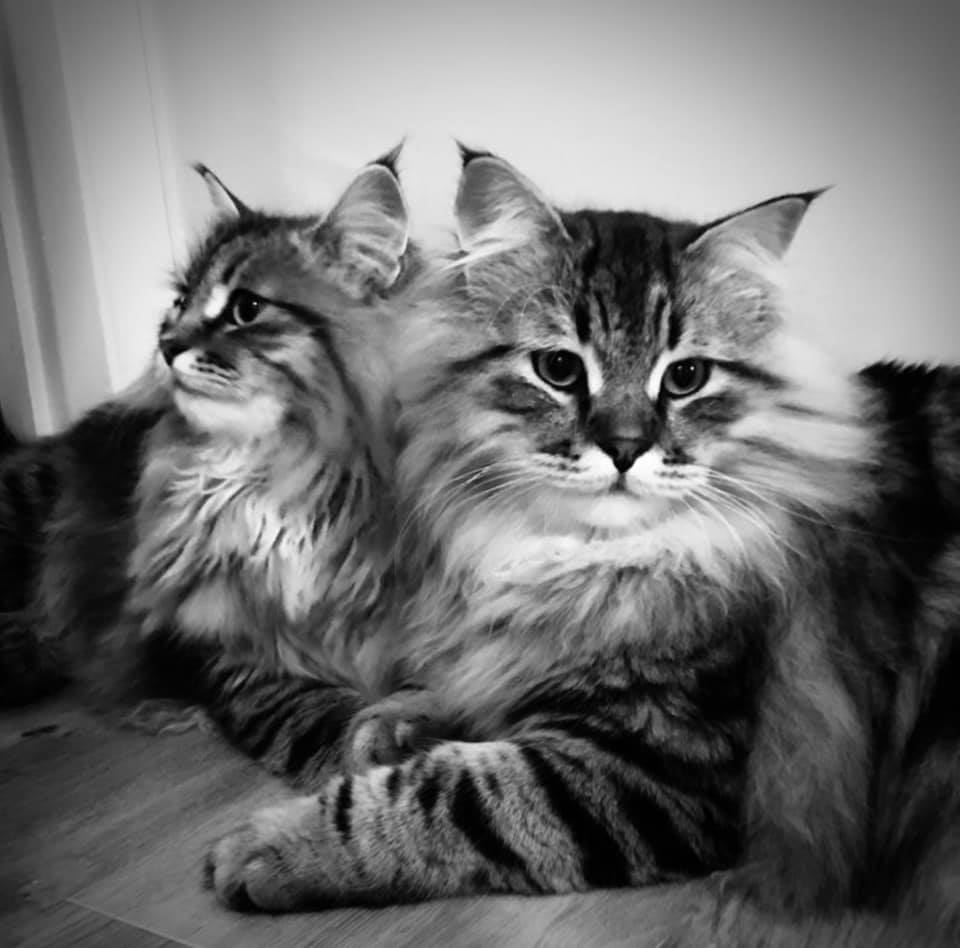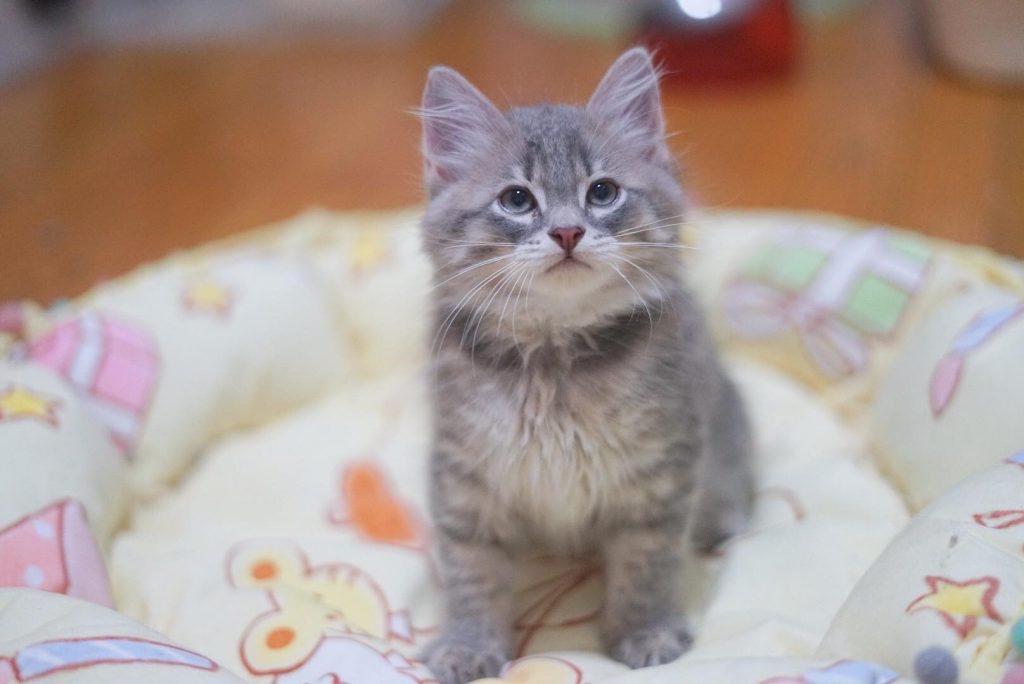Comportment and temperament
Siberians are very affectionate, clever and sociable cats. They are very close to their owners, always following them around and in most cases, they are real “sofa cats” depending on how they are raised.

They enjoy staying wherever their owners are and taking part in all family activities.
This amazing temperament that we observe in most Siberian cats is not exactly a “coincidence”. It is the effect of a natural selection exercising influence for years on their behaviour. Even if the breed is young, the cats are old.
if we compare Siberians to the European cat:
While European cats were persecuted, even eventually burnt with their owners by the Catholic church and sometimes hated by the entire population like black cats were. In Russia they were accepted and valued by the Orthodox Russian church. They were taken in or rescued by Russian priests and were allowed to roam freely in the churches.
Russian people deeply love their animals and cats were highly appreciated as mousers and companions.
Looking through an ethology perspective:
Mother cats raise their babies, teaching all they know with the goal of giving them the best chances of survival.
But survival for an European mother cat doesn’t mean the same for a Siberian mother cat. Observing the way the two cats evolved and considering the climate conditions throughout Russia, Siberian mothers will give a very different education to their kittens compared to European mothers.

For the European mother survival means: “getting by on their own”, learning where to find food, learning to avoid danger like roads, being extremely sensitive to their environment, noises, vibrations on the floor and also being suspicious with people they don’t know/trust.
Survival for the Siberian mother is different: If we consider the climate, knowing that a cat cannot simply “get by” alone on their own when it is – 20° degrees negative outside (no food and hypothermia risk), for these cats, humans are their salvation! Siberian cats develop a “binôme”, they learned to team up with humans and learn how to be charming, lovely, how to make “sweet eyes” and that humans are friends.
If you approach a stray European without food in your hands, there is a good chance they will run. If you approach a Siberian cat, without food, there is a good chance they will come to greet you even if you are a stranger.
This means your Siberian will not be unhappy being an interior cat, they are affectionate and devoted to their family and very clever but their education is flawed regarding the big cities, exterior gardens and major dangers, like roads, badly intentioned people or on the opposite, they could be catnapped since they are not afraid of people.
If you live in apartment, your cat will be comfortable if the surface is not too small but you need to think about security for the windows.
Siberians don’t deal well with solitude, so if you have a hectic life, perhaps it would be better to have two cats since they will keep each other company.
You can make your cat’s life richer with simple things like placing a cat tree beside the window or making your own toys with cardboard and catnip toys hidden inside or a simple bath tube and ping pong balls inside to play.

You can and should educate your Siberian cat and even if cats are a bit stubborn (Siberian included) your Siberian will be very in tune with your fellings and you can use the tone of your voice to show when you are not happy (no need to raise your voice but show you are not happy with a very different intonation).
A behaviour that can be considered cute when they are small may become rather annoying when they grow.
So educate your cat, Siberians are fast learners!
Daniela Barros.